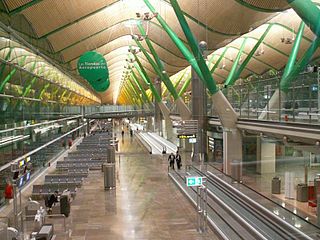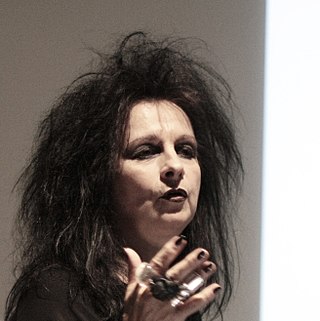
The Pritzker Architecture Prize is an international award presented annually "to honor a living architect or architects whose built work demonstrates a combination of those qualities of talent, vision and commitment which has produced consistent and significant contributions to humanity and the built environment through the art of architecture." Founded in 1979 by Jay A. Pritzker and his wife Cindy, the award is funded by the Pritzker family and sponsored by the Hyatt Foundation. It is considered to be one of the world's premier architecture prizes, and is often referred to as the Nobel Prize of architecture.

The Royal Institute of British Architects Stirling Prize is a British prize for excellence in architecture. It is named after the architect James Stirling, organised and awarded annually by the Royal Institute of British Architects (RIBA). The Stirling Prize is presented to "the architects of the building that has made the greatest contribution to the evolution of architecture in the past year". The architects must be RIBA members. Until 2014, the building could have been anywhere in the European Union, but since 2015 entries have had to be in the United Kingdom. In the past, the award included a £20,000 prize, but it currently carries no prize money.

Dame Zaha Mohammad Hadid was an Iraqi-British architect, artist and designer, recognised as a key figure in architecture of the late-20th and early-21st centuries. Born in Baghdad, Iraq, Hadid studied mathematics as an undergraduate and then enrolled at the Architectural Association School of Architecture in 1972. In search of an alternative system to traditional architectural drawing, and influenced by Suprematism and the Russian avant-garde, Hadid adopted painting as a design tool and abstraction as an investigative principle to "reinvestigate the aborted and untested experiments of Modernism [...] to unveil new fields of building".

Yasmeen Lari is Pakistan's first female architect. She is best known for her involvement in the intersection of architecture and social justice. Since her official retirement from architectural practice in 2000, her UN-recognized NGO Heritage Foundation Pakistan has been taking on humanitarian relief work and historical conservation projects in rural villages all around Pakistan. She was awarded the prestigious Fukuoka Prize in 2016 and the RIBA's Royal Gold Medal in 2023.
Diller Scofidio + Renfro is an American interdisciplinary design studio which integrates architecture, the visual arts, and the performing arts. Based in New York City, the studio was founded by architects Elizabeth Diller and Ricardo Scofidio in 1981. Charles Renfro joined in 1997, and was named partner in 2004. Benjamin Gilmartin became the firm's fourth partner in 2015.

Eva Jiřičná is a Czech architect and designer, active in London and Prague. She is the founder of the architectural atelier Eva Jiricna Architects, operating in Britain from 1982 to 2017 and a co-founder of AI DESIGN, that she opened in 1999 together with Petr Vágner. She is known for her attention to detail and work of a distinctly modern style, and for her glass staircases.
Kathryn Gustafson is an American landscape architect. Her work includes the Gardens of the Imagination in Terrasson, France; a city square in Évry, France; and the Diana, Princess of Wales Memorial Fountain in Hyde Park, London. She has won awards and prizes including the Millennium Garden Design Competition. She is known for her ability to create sculptural forms, using earth, grass, stone and water.

Amanda Jane Levete is a Stirling Prize-winning British architect and the principal of AL_A.

Czech culture has been shaped by the nation's geographical position in the middle of Europe, the Slavic ethnicity of Czechs, influences from its neighbors, political and social changes, wars and times of peace.
Feminist theory as it relates to architecture has forged the way for the rediscovery of such female architects as Eileen Gray, Charlotte Perriand, Marion Mahoney Griffin, Lilly Reich, Jane Drew, Lina Bo Bardi, Anne Tyng, Norma Merrick Sklarek, Denise Scott Brown, among many others. These women imagined an architecture that challenged the status quo, and paved the way for future women designers and architects.
AL_A, formerly known as Amanda Levete Architects, is a London-based practice formed in 2009 by Stirling Prize-winning architect Amanda Levete CBE.
Kathryn Findlay was a Scottish architect.

Odile Decq is a French architect, urban planner and academic. She is the founder of the Paris firm, Studio Odile Decq and the architecture school, Confluence Institute. Decq is known for her self-described goth appearance and style.

Women in architecture have been documented for many centuries, as professional practitioners, educators and clients. Since architecture became organized as a profession in 1857, the number of women in architecture has been low. At the end of the 19th century, starting in Finland, certain schools of architecture in Europe began to admit women to their programmes of study. In 1980 M. Rosaria Piomelli, born in Italy, became the first woman to hold a deanship of any school of architecture in the United States, as Dean of the City College of New York School of Architecture. In recent years, women have begun to achieve wider recognition within the profession, however, the percentage receiving awards for their work remains low. As of 2023, 11.5% of Pritzker Prize Laureates have been female.
The year 2015 in architecture involved some significant architectural events and new buildings.
Iwona Buczkowska is a Polish-born French architect and urban planner. She designed the Cité Les Longs Sillons, where she also lives and works.

Elizabeth Diller, also known as Liz Diller, is an American architect and partner in Diller Scofidio + Renfro, which she co-founded in 1981. She is also an architecture professor at Princeton University.

SOHO China is a Chinese building developer, primarily in the office and commercial sector, with some residential and mixed-use properties in its portfolio. The company, which uses the name "SOHO" in both English and Chinese contexts, was founded in 1995 by Chairman Pan Shiyi (潘石屹) and CEO Zhang Xin (张欣). The name SOHO comes from the phrase "Smart Office, Home Office" as the company decided to combine office rooms and residential apartments in the same building to facilitate a comfortable and productive environment.

Galaxy SOHO is an urban complex building located in Beijing, China. Built between 2009 and 2012, it is the first of three buildings designed by Iraqi-British architect Zaha Hadid located in Beijing, along with Wangjing SOHO and Leeza SOHO.
Christine Murray is a Canadian-born architecture writer, critic and former editor of The Architectural Review and Architects' Journal, and a contributor to Dezeen and The Guardian. She is founder and editor of The Developer magazine.











